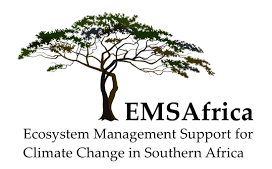
EMSAfrica
Contact: Ulfia Lenfers
Website: emsafrica.org
Nowadays, many semi-arid ecosystems are affected by at least two different kinds of disturbances: land use change) and climate change. Based on this, it can be hypothesized that even very resilient ecosystems may not return to their initial state after disturbance, but will rather adapt to a new steady-state. We name this phenomenon “Adaptive Resilience of Ecosystems” and use it as base for the research concept of ARS AfricaE. This project wants to go beyond older approaches that only describe structural changes in savannas and their drivers. It employs functional aspects, such as the investigation of biogeochemical cycles, but also targets a deeper understanding of the functional consequences of ecosystem changes caused by multiple disturbances, and defines “degradation” as a sustained loss in the broad set of ecosystem services, i.e. a decrease in natural capital.
To achieve this goal, the project will:
- create a network of research clusters (with natural and altered vegetation) along an aridity gradient in the Greater Karoo, Kruger National Park in South Africa, and Kataba Forest Reserve in Zambia
- link biogeochemical functions with ecosystem structure, diversity of species and eco-physiological properties
- describe ecosystem disturbance (and recovery) in terms of ecosystem function such as carbon balance components and water use efficiency
- build an individual-based model to predict ecosystem dynamics under (post) disturbance managements
- combine this model with long-term landscape dynamic information derived from remote sensing and aerial photography
- develop sustainable management strategies for disturbed ecosystems and land use change